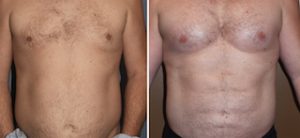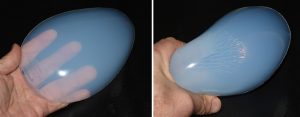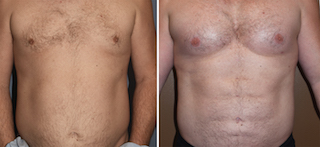
While saline breast implants are placed in a deflated fashion and silicone implants are gel-filled and very deformable, pectoral implants are more solid and usually have a greater surface area footprint. This makes their insertion through desirable small axillary incisions challenging.

Pectoral Implant Funnel Insertion 2 Dr Barry Eppley Indianapolis 2The technique of pectoral implant insertion using the funnel device is illustrated in the attached short clip video. The pectoral implant is rolled and placed into the funnel in a superior to inferior axial direction. This allows it to unfold once in the pocket in the correct orientation.
Using the funnel insertion device for pectoral implants allows the incision placement to be high up in the axillary fold and to keep the incision length under 7 cms. While this is a slightly bigger incision that that used for saline breast implants and some silicone breast implants, it heals well high up under the axillary region. This is a far superior incisional result that any incision access placed lower.
Dr. Barry Eppley
Indianapolis, Indiana



